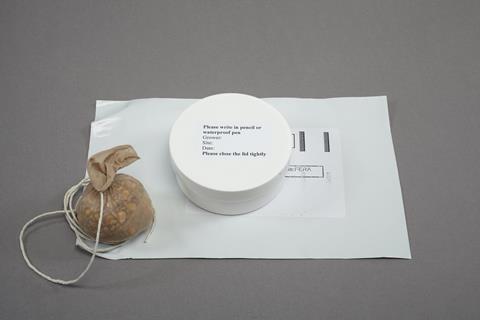Wireworm damage has had a heavy cost for the potato, veg and salad sectors

Fera Science has launched a cutting-edge wireworm DNA barcoding test, designed to help UK potato, vegetable, arable and salad growers accurately identify wireworm species and protect crops from escalating damage that has already cost the industry hundreds of thousands of pounds.
Officially launched at Groundswell 2025, the new tool has been developed as part of Fera’s ENIGMA I research project to meet the urgent need for more effective wireworm Integrated Pest Management (IPM).
Principal entomologist at Fera, Dr Larissa Collins, led the project, and said the findings have revealed that climate change is creating more favourable conditions for wireworm populations. “There are over 60 species of wireworms in the UK but only a handful are crop pests; others do no harm, and some are even predators of the crop-damaging species,” she said.
“This means that understanding which species are present is critical to managing pest populations effectively. Accurate pest identification is the first critical step in sustainable integrated pest management.”
The new DNA barcoding test can help growers pinpoint exactly which wireworm species are present in their fields, according to Fera. It will help to optimise pest-management decisions to minimise crop damage and ensure that interventions, including cultural controls and insecticides, are used in the most effective way.
The new solution is a direct outcome of Fera’s ENIGMA I research project – a collaboration with industry partners Blackthorn Arable, Elveden Estate, G’s Growers, inov3PT, Pearce Seeds and Syngenta.
The project involved analysing over 13,000 field-collected click beetles to study wireworm life cycles, responses to increasing temperatures, damage patterns, and risk factors across multiple crops, revealing the six wireworm species most concerning for UK growers.
“We’ve worked closely with industry partners to develop a test to identify wireworms which are not possible to identify by visual examination, from samples sent in by growers,” Collins explained.
“Growers purchasing a test will receive a kit to return to us with wireworms in for testing, and if needed, we can supply a bait bag to help with collecting the wireworms. Using the samples, we can also measure the wireworms to give an indication of larval instar, so the timing of the lifecycle can also be used to make decisions about crop rotation and control measures.”
The test makes identification of species, even small wireworms, possible, providing growers with actionable insights to implement IPM measures and reduce damage.



